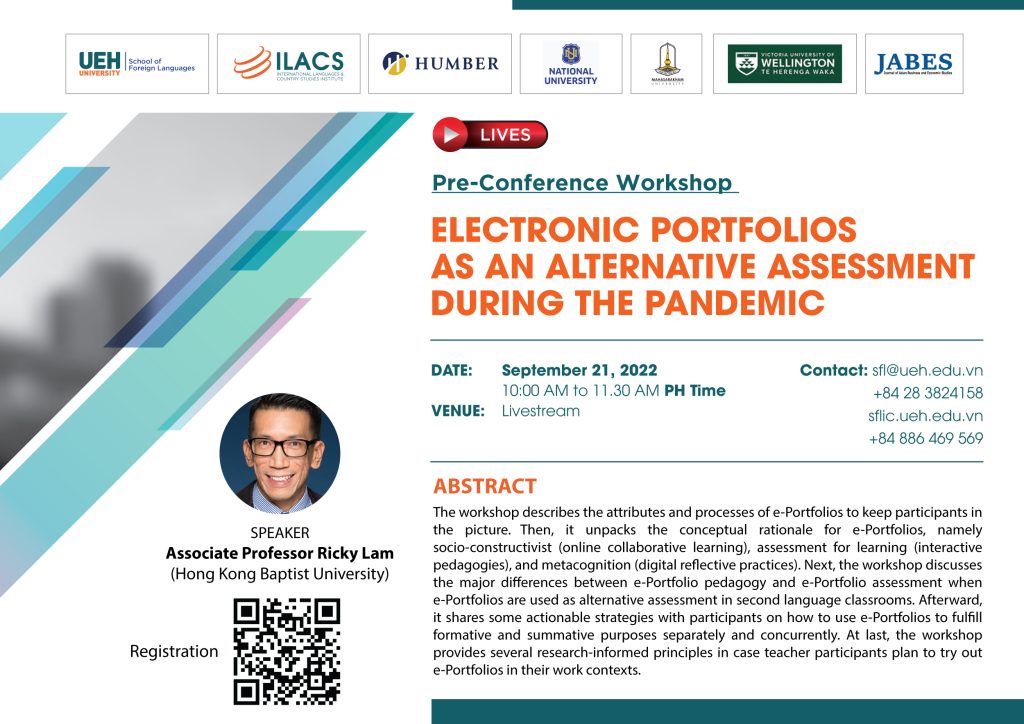
UNDERSTANDING WORD FORMATION IN ENGLISH AND VIETNAMESE
Nguyen Luong Hoang Thanh, M.A.
RATIONALE
According to Tanaka (2006), among 3000 languages supposed to exist on the Earth, English is the only language labeled “an international language”. Therefore, the position of English in the map of world languages remains unique. However, learning English is definitely not an easy task to fulfill as there are so many things to learn. Besides the skills such as speaking, listening, writing, and reading; vocabulary also plays an important role. The more vocabulary we have, the clearer and more accurate ideas we can express and the shorter the process of learning English becomes. However, people often describe learning new words as a never-ending process. What we can do is to make this seemingly difficult and boring process easier and more interesting to complete. As a consequence, a mini research is conducted to provide insight into the word formation in English and Vietnamese. Full text
*******
Nguyen Thi Bich Duyen, M.A.
Abstract
This paper aims at analyzing the article “Curriculum Approaches in Language Teaching: Forward, Central, and Backward Design” by Jack C. Richards. A brief summary of three kinds of curriculum design will be followed by a discussion for strengths and limitations of the article in general, and of each design in particular. A personal reflection including responses, relevance and implication of these curriculum approaches is also covered in accordance with Vietnam teaching and learning context. Full text
Ton Nu Tuy Anh, PhD in Linguistics
Introduction
My recent investigation into the pragmatic input in a national EFL textbook series for Vietnamese high school students reveals a paucity of explicit information on pragmatics, together with inadequate presentations of different pragmatic aspects (see Ton Nu, 2018; Ton Nu & Murray, 2020 for more information). These shortcomings of the textbooks regarding pragmatic content require teachers to play a more active role in integrating pragmatics into their lessons to facilitate the development of students’ communicative abilities in English. This has motivated me to organize a one-day training workshop for high school Vietnamese EFL teachers in order to raise their awareness of pragmatics and its teaching for their potential incorporation of pragmatics into their English lesson to help improving students’ communicative competence in the target language in the EFL contexts. Full text
*****
PHÂN BIỆT HÌNH THÁI DĨ THÀNH HIỆN TẠI (PRESENT PERFECT) VÀ HÌNH THÁI QUÁ KHỨ ĐƠN (SIMPLE PAST)
ThS. Trương Thị Anh Đào
Trong quá trình học tiếng Anh, người Việt thường mắc những lỗi ngữ pháp có quan hệ với loại hình, đặc biệt là lỗi về cách dùng thì. Chẳng hạn khi phải chuyển dịch một câu tiếng Việt trong đó có đã hay rồi sang tiếng Anh thì người học thường hay chuyển dịch sang bằng hình thái quá khứ của vị từ. Điều này sẽ đúng nếu sự tình trong câu được định vị trong một khung thời gian xác định ở quá khứ. Tuy nhiên, nếu không có khung thời gian, những chỉ tố này có thể biểu đạt nhiều ý nghĩa khác nhau tùy theo cấu trúc ngữ nghĩa và ngữ dụng của câu. Để giúp cho người học có thể sử dụng dễ dàng hai hình thái vị từ này, sau đây chúng ta sẽ so sánh cách dùng của chúng. Full text